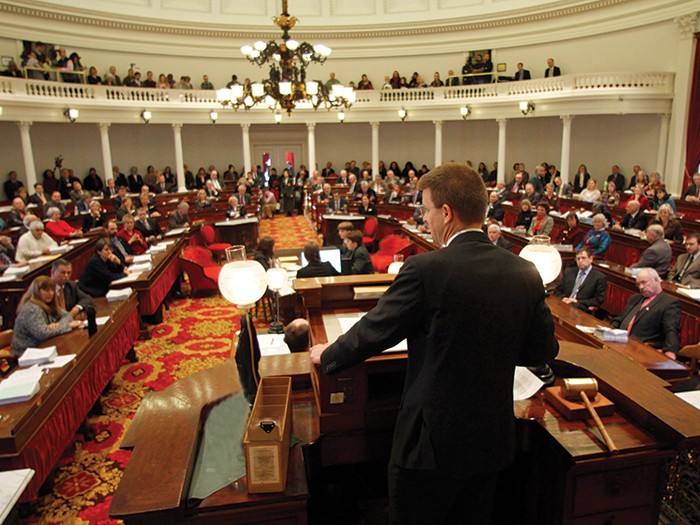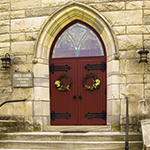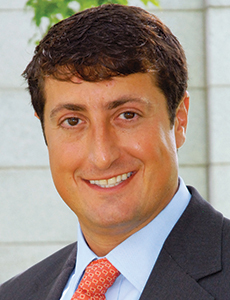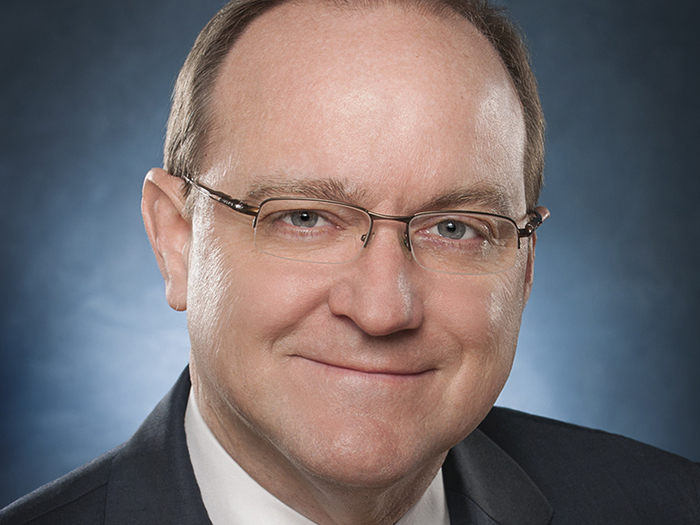Vermont 2015
True Partners

Life is hard for most bills. It’s not easy to become a law.
“How I hope and pray that I will, but today I am still just a bill,” is the sad refrain of one of the more famous bills of all, Bill from the classic Schoolhouse Rock skit, “How a Bill Becomes a Law.”
That Bill waited for what seemed like an eternity to 8-year-olds everywhere watching the 1970s kids program, as he went from an idea to a bill stuck in committee to one languishing on the steps of the Capitol, worried that he would get the presidential veto.
If only Bill grew up to be the Vermont captive law. He would live a charmed life and be touted around the captive insurance world as the gold standard. Every year, he would get a makeover in a process of legislative improvement that is the epitome of bipartisan, productive policymaking. He would never experience rancorous, political sausage-making, never suffer the horrible fate of being tabled in a subcommittee to a subcommittee. Real Vermont captive law upgrades have succeeded nearly every year since the creation of the Vermont domicile in 1981.
VIDEO: Vermont Gov. Pete Shumlin talks about the captive industry in his state.
The Vermont captive law is a manifestation of one of the most constructive and successful private-public partnerships in the U.S. financial services industry. Communication channels between captive owners and managers, Vermont’s financial regulators and members of the state’s legislative finance committees are proactive and ongoing.
The result is, and has always been, that everyone benefits — the people of Vermont who enjoy a robust industry of well-paying jobs, captive owners who get the stringent but fair regulation they’re seeking, and the state treasury and its flow of tax income.
The Process, Revealed
Just as that poor Bill in Schoolhouse Rock, Vermont’s captive laws begin each year as ideas, which are then hashed out, refined, tested and codified by the legislative process.
“Updating and improving our captive law is a Vermont tradition. We do it virtually every year. It is evidence that we never rest on our laurels as we are always trying to improve upon the previous year,” said Dan Towle, director of financial services at Vermont’s Agency of Commerce & Community Development.
Each fall, the Vermont Captive Insurance Association (VCIA) presents the state’s Department of Financial Regulation (DFR) with a “wish list” of items, alterations the industry would like to see in the law. The VCIA solicits ideas from its members through a survey, as well as in individual meetings with leaders from the captive management community, said VCIA President Richard Smith, who with his team then distills the industry’s top priorities.
“Sometimes we push the envelope,” Smith said of the ideas they bring to the regulators.
Deputy Commissioner David Provost mentions any concerns he has about these VCIA recommendations, Smith said, though the commissioner’s style is to rarely say “no” outright and instead always be open to how an idea might work.
In turn, chief captive regulator Provost and his DFR Captive Insurance Division team bring their own ideas to the table, along with any changes necessary to the law to maintain accreditation with the National Association of Insurance Commissioners.
Through this meeting of minds, both groups of stakeholders trim and tighten the wish list until it takes on the form of a proposed bill that both sides can support and present to state lawmakers.
“It’s a very collaborative process,” Towle explained. “It is part of the reason we are so successful in Vermont. If a change is proposed we keep an open mind to the proposal. If it makes sense, the proposal is fully vetted before it would be introduced in legislation.”
“We make sure that our regulators and our captives talk to each other,” seconded state Rep. Bill Botzow, a Democrat from Bennington and the chair of Vermont’s House Committee on Commerce and Economic Development.
“This gives the captives the highest assurance that as they undertake their work, that they are safe.”
These ideas take the first big leap toward becoming law when regulators present them as a draft bill to one of the committees of jurisdiction, the House Committee on Commerce and Economic Development or the Senate Finance Committee, whichever takes up the bill first. (In the case of the 2015 bill, the Senate Finance Committee had first crack.)
As Provost related the process, his team does not just place the bill before the legislature and then disappear to their offices a few blocks down the street. Regulators remain on hand to summarize the bill for legislators or even walk them through it, line by line, if necessary. They point out the significant changes of the year and their rationale. Said Botzow, lawmakers know a bill arrives in the state capitol well vetted by the time they see it.
The first committee then presents the bill to the full House or Senate, respectively, where it passes and travels to the next chamber for further consideration. Thereafter, it is christened into law with the flourish of the governor’s pen. Gov. Peter Shumlin, it should be noted, is an important member of this public-private success story, and the state’s executive has always been, whether Democrat or Republican.
That doesn’t mean, though, that the bill isn’t made to proverbially sweat a bit. Lawmakers give it more than a once over; they ask questions and make their own revisions. They are partners in the process, and they take responsibility for their constituents’ and the state’s well-being.
“ ‘Politics as usual’ in Vermont is a bit different from some other places. We may have our differences of opinion, but we move things along.” — David Provost, deputy commissioner of captive insurance, Vermont
“Our legislature and governor are very savvy about captive insurance. We expect to get the tough questions when we testify before the legislature. They too take an ownership in our success in Vermont,” Towle said.
One might expect American politicians to take their jobs too seriously — or at least their political views and party lines too seriously — but perhaps the most amazing quality of the Vermont system is that it’s not afflicted with the venomous gridlock that stymies public policy in other locales and at the federal level.
Part of the reason is that Vermont politics in general doesn’t reach that level, according to insiders — even in an election cycle that saw the governor’s race so close that the legislature decided it and the loser threatened to challenge the results.
“ ‘Politics as usual’ in Vermont is a bit different from some other places,” Provost said. “We may have our differences of opinion, but we move things along.”
Another explanation has to do with how well lawmakers are educated about the importance of the captive industry. In 2013, the state reaped more than $27.4 million in premium tax benefits and related industry fees, and by the most recent count, the industry has created more than 1,400 jobs in the state.
The industry itself is so well established in Vermont that even if incoming lawmakers don’t understand the technical aspects of captives, they are familiar with their positive impact, explained Smith.
In part, that’s because the industry does a good job of delivering that message to lawmakers, both incumbents and newly elected. Each January at the start of the legislative session, VCIA brings industry representatives to Montpelier. Experts present on captive basics and benefits, and captive owners testify to the successes of their alternative risk transfer vehicles.
“It’s a day for us to go up and wave the captive flag,” Smith said.
Even for an experienced legislator like Botzow, face-to-face time with captive leaders allows him to catch up on the state of the industry both at home and abroad, on the influx and outflux of captives to Vermont, best practices on how captives are reserving and other pertinent information. If the industry reps and regulators miss something, elder statesmen do their part to bring their younger colleagues up to speed.
One group in this public-private partnership that needs no refresher on captive basics is the regulatory team. Since the industry came into being with the very first captive law in Vermont in 1981, only three individuals have served as its regulatory leader.
That speaks to a consistency of vision and application of the law. It’s this depth of experience and long timeframe, said Smith, that also explains how Vermont captive regulators have built such relationships and reputations in Montpelier, as well as among captive owners and managers across all domiciles, onshore and off.
The other group, of course, are the for-profit and nonprofit organizations that own Vermont’s captives, as well as the vendors who offer accounting, actuarial, legal, captive management and other services. One main reason Vermont’s public-private partnerships work is that these organizations value the firm but fair, gold standard regulation, said their chief representative Smith.
Ultimately, what derives from such sound public policy is an exemplary system that is always being improved upon. In 2014, for instance, the new captive law featured two significant changes related to captives’ dormant status and reciprocal insurers.
Expect five alterations to come out of the 2015 captive law. As Provost reported at the writing of this article, the wish list included:
- Reduction in the number of necessary incorporators from three to one.
- Lowering of the minimum capital and surplus of sponsored cell companies, and allowing marketable securities, as well as cash, to satisfy minimum capital and surplus requirements.
- Adding naming conventions to incorporated cells.
- Providing more explicit protections for the cells and the sponsors.
- New corporate governance standards for risk retention groups to ensure they are member-owned-and-operated insurers.
The changes reflect the drive to remain in line with the latest regulatory developments and in touch with the reality on the ground.
For instance, the new capital and surplus levels for sponsored cells reflect the fact that most cells are fully funded and that capital in the core company isn’t as much of a concern.
At the time of this writing, the 2015 bill had not yet become law and these changes hadn’t gone into effect, but odds are they will soon.
As Smith recounted, he’s had lawmakers ask him, “How can we do this with other business issues?”
Complete Vermont 2015 Coverage:
 Building an Engine for Global Risk Management Success. A fully integrated captive brings risk management to the multiple arms of an organization.
Building an Engine for Global Risk Management Success. A fully integrated captive brings risk management to the multiple arms of an organization.
 The Surprising World of Nonprofit Captives. They comprise fully one-quarter of all captives domiciled in Vermont.
The Surprising World of Nonprofit Captives. They comprise fully one-quarter of all captives domiciled in Vermont.
 True Partners. The success of the captive industry in Vermont is the result of a rare, collaborative relationship between the public and private sectors.
True Partners. The success of the captive industry in Vermont is the result of a rare, collaborative relationship between the public and private sectors.











